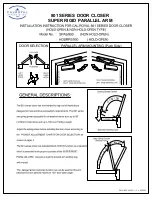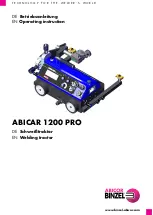
Spin Welder User’s Manual
Section 5 – Theory of Operation
Page 29
Page 28
Dukane Manual Part Number 403-547-03
Dukane Manual Part Number 403-547-03
areas require more pressure. Higher pressure not
only increase the weld penetration depth, it also in-
creases the penetration velocity. Mass reduction – a
measure of the amount of wear particles and flash
– is not significantly affected by increased pressure,
especially at high rotation speeds. A slower surface
velocity (i.e. small diameter weld joints) requires
higher pressure. Higher axial pressure may also be
required to force any contaminants or bubbles out of
the weld joint. The combination of speed and pres-
sure must be controlled but be high enough to cause
melting at the interface as opposed to grinding.
Surface Velocity (RPM)
For a fixed rotational speed, surface velocity in-
creases with weld joint diameter. For a fixed weld
joint diameter, surface velocity increases with mo-
tor RPM. Smaller diameter parts therefore usually
require more RPM than larger parts and typically
cannot tolerate as much axial pressure. However, the
same percentage change in axial pressure has a larger
effect than the same percentage change in RPM in
determining the time required to initiate weld forma-
tion and the depth to which the weld penetrates. The
previous statement is a generalization, and is meant
to imply that axial pressure has a greater effect
than motor RPM. Mass reduction shows an almost
exponential increase with rotational velocity.
Weld Time
Welding time is the third process variable. It is the
time the axial pressure and surface velocity are
applied to achieve the desired uniform weld pen-
etration depth. Increasing the weld time results
in an almost linear increase in weld penetration.
Weld penetration beyond the critical threshold
does not significantly increase weld strength.
The total welding time is dependent upon load-
ing pressure, rotational velocity and desired
weld penetration depth. Once the desired weld
















































